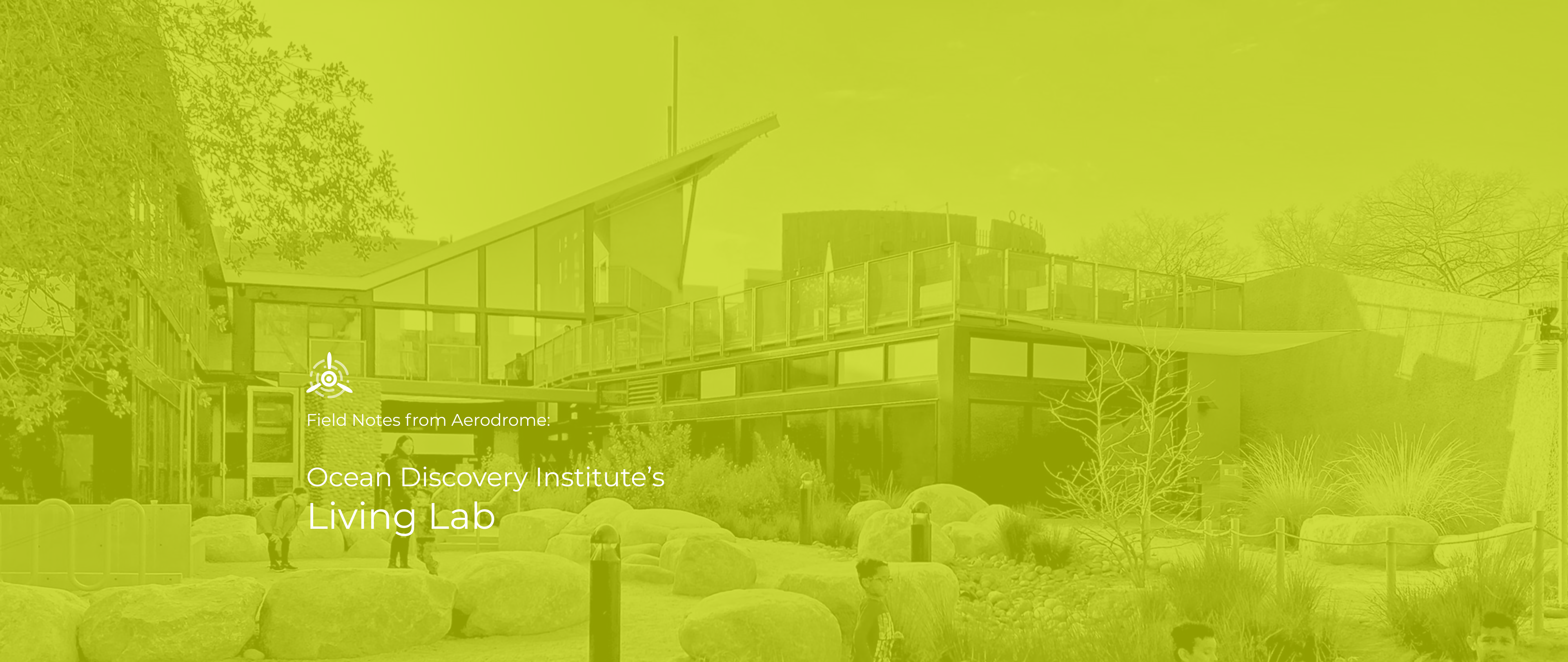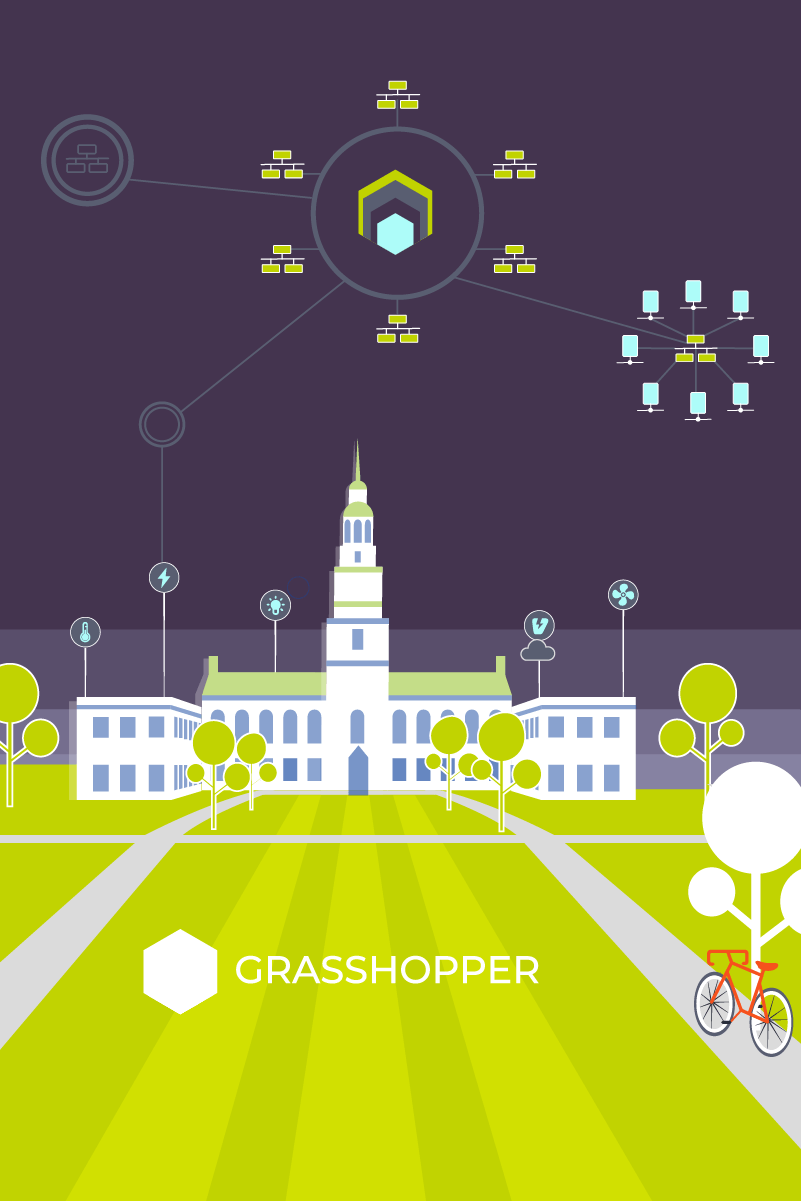Ocean Discovery Institute (ODI) is a nonprofit organization in San Diego’s City Heights neighborhood that uses science to transform lives. Their LEED Platinum-certified Living Lab provides thousands of young people—many of them historically excluded from science—with the tools, mentorship, and hands-on experience needed to become tomorrow’s science and sustainability leaders.
Stok, a long-time leader in sustainable real estate services, partnered with ACE IoT to deploy an Independent Data Layer (IDL) at the Living Lab—ensuring the ODI team has access to building performance data that supports both daily operations and long-term impact.
Read on for a closer look inside the Living Lab—and how data is helping bring its mission to life.
Ocean Discovery Institute’s Living Lab & Data-Driven Operations
1. Can you provide an overview of Ocean Discovery Institute and the Living Lab? What is ODI’s mission and how does the Living Lab support this mission?
Ocean Discovery Institute was founded in 1999 to create learning experiences for young people traditionally excluded from science due to race, income status, and educational opportunity. Through our programs in school, after school, and over the summer, our students join high-paying fields, break generational poverty, and are changing the future of science. The Living Lab, our state-of-the-art, LEED Platinum-certified science education facility, is located in the heart of San Diego’s diverse City Heights community and embodies this mission. By serving as both a scientific hub and a beacon of sustainability, the Living Lab provides over 7,000 students annually with hands-on science education, mentorship, and opportunities to explore careers in biotech, environmental sciences, and engineering.
2. The Living Lab is described as a state-of-the-art science education facility. What are some of its standout features from an operational perspective, including sustainability, energy efficiency, and technology integration?
The Living Lab stands out for its holistic integration of sustainability and cutting-edge technology. Designed by renowned architect Rob Wellington Quigley, the building achieved Zero Net Energy (ZNE) status and LEED Platinum certification through meticulous planning and innovative solutions such as passive cooling techniques, daylight optimization, and a robust 50.4 kW solar array installed on unique solar “trees.” It also features advanced submetering systems for detailed energy tracking, greywater recycling for irrigation, and building materials sourced from recycled and reclaimed materials. This careful orchestration allows the Lab not only to sustain itself but also to serve as a practical, living example of sustainability and conservation for students and the community alike.
3. How does data play a role in managing and optimizing the Living Lab’s operations? How does ACE IoT’s Aerodrome support this? Beyond ACE, what other tools or systems do you use for monitoring building performance?
Data is central to the Living Lab’s commitment to continuous improvement and operational efficiency. Using ACE IoT’s Aerodrome gateway, we collect real-time data on energy consumption, production, and environmental conditions. This data is crucial for identifying spikes in energy use, pinpointing temperature hotspots throughout the facility, and optimizing building performance.
Additionally, in collaboration with Stok, we translate this complex data into intuitive visuals for our students—such as energy usage versus energy production charts—making sustainability concepts accessible and actionable (check out the data dashboards created by Stok below).
Beyond ACE IoT’s solutions, we also utilize localized weather stations and a comprehensive suite of submeters throughout the facility, enabling detailed tracking and immediate adjustments to energy use.
4. Could you share a success story where data-driven insights helped improve your facility’s operations or enhanced the learning experience?
One notable success story involved leveraging our building’s detailed energy usage data. After reviewing ACE IoT’s Aerodrome-collected insights, our staff identified unusually high energy consumption patterns tied to specific areas within the Lab. This led to targeted operational adjustments, significantly reducing unnecessary energy use. Furthermore, we incorporated these real-world scenarios into our educational programs, allowing students to directly engage with sustainability practices. This practical approach enhanced their learning, fostering critical thinking and problem-solving skills around energy conservation.
5. What challenges have you encountered in managing a high-performance educational facility, and how have you addressed them?
Managing a high-performance facility comes with challenges such as maintaining optimal comfort without conventional air conditioning systems, particularly during hot weather. We addressed this by utilizing passive ventilation, strategically placed fans, and teaching students and staff proactive management strategies using real-time data. Encouraging behavioral adaptations, such as adjusting clothing and utilizing outdoor learning spaces, further complemented these technical solutions, demonstrating the symbiotic relationship between sustainability, adaptability, and comfort.
6. What advice would you give to other organizations looking to optimize their building operations while maintaining a mission-driven focus?
We recommend prioritizing early-stage planning and extensive community involvement to ensure the building genuinely meets community needs. From the outset, sustainability goals were embedded into our design, and implementing robust energy data collection and submetering systems was critical. Most importantly, continuously engaging building occupants—students, staff, and community members—in monitoring and managing building performance ensures sustained commitment and enhances educational outcomes.
7. Are there any upcoming projects or initiatives at ODI related to facility management, sustainability, or technology integration that you’re particularly excited about?
We are thrilled about several upcoming initiatives that further our sustainability mission and deepen student involvement, including expanding our composting program, adding additional solar panels, constructing new outdoor educational spaces, and creating a paver pathway featuring student-designed microplastic art. These projects exemplify our ongoing commitment to innovative, hands-on sustainability education that empowers students to make tangible differences in their community.
8. Where can people learn more about your organization and the Living Lab?
To learn more about Ocean Discovery Institute and our Living Lab, visit our website at oceandiscoveryinstitute.org/living-lab.
Data Visualization in Education
Following are screenshots of the interactive dashboard created by Stok’s Charlie Christianson using submeter data from the ACE IoT gateway and utility data. This allows the Living Lab team to track the building’s progress towards ZNE and identify excessive usage and address issues. The dashboard will also be incorporated into curriculums giving students the opportunity to gain an understanding of how energy is being used in the building.




ACE IoT is honored to support the Ocean Discovery Institute’s vision and thankful to their team for taking the time to share their experience. And we’re equally grateful to Stok for their continued partnership and leadership in making projects like this possible—where sustainability and equity are built into the foundation.
To learn more about ODI’s work or support their mission, visit www.oceandiscoveryinstitute.org.
To explore Stok’s approach to sustainable real estate and high-performance buildings, visit www.stok.com.


